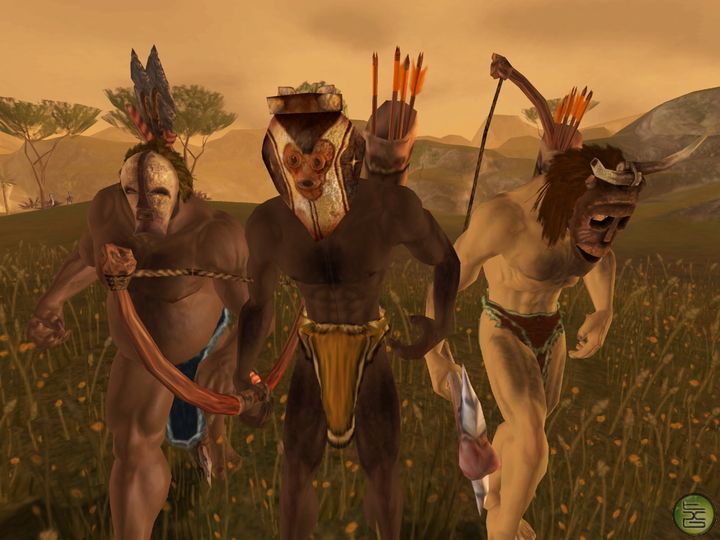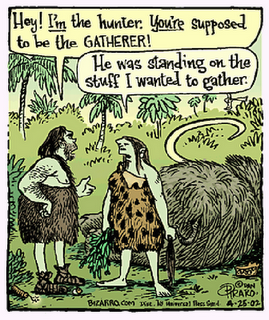Male and female creativity, is there a difference?
Let’s get real, okay? There is a difference between female and male creativity. One is not better than the other. Both are valuable, both are worthy. Both men and women have new ideas and make new decisions, and they do it in their own way. Women tend to be better in verbal fluency, while men tend to have an advantage with spatial tasks. Why would we expect the nature of their creativity to be the same?
Has gender influenced how creativity is researched?
Until recently it was men who defined and wrote about creativity according to their perceptions, influenced by their brain make up. I wonder what other questions might be researched if women were the lead investigators in the area. Again, not better, different, complimentary.
Research shows that men and women have different structures and wiring in the brain, and men and women also use their brains differently. Functional magnetic resonance imaging (fMRI) and other noninvasive scans of male and female brains suggests that gender plays a role in stress reactions, and may influence memory, hearing, vision, emotion, even how we relax.
Male brains focus on far-away targets to the exclusion of other stimuli. As primitive hunters sought to provide protein for the clan, they went after prey, tracked it, captured it, owned it. It is possible that the early creativity researchers acted in a similar ways due to the patterning of their brains. To understand and master the phenomenon, the target, they first defined it, made tests to support their theories to understand it and provided evidence of its existence, much in the same way their predecessors pursued their quarry so many millenia ago.
Women’s brains perceive with gestalt concrete awareness and reading visual cues. As did early gatherers, they scope the scenery for a broad view of their surroundings keeping in sharp awareness of their immediate context. Our primitive fore-mothers watched for signals in the children’s emotions, looked-out for potential hazards and collected nuts and berries at the same time. Their ability to multi-task has been going on forever, and for good purpose, and likely because of the structure of their brain. Qualitative research, perhaps, more so that the scientific method, might be an approach that would be a natural expression of this intelligence.
Implications
Men’s naturally logical linear abstract way of thinking influenced what is accepted as truth and right. Using their scientific approaches, if you can’t prove it, it doesn’t exist. Over the centuries women’s ways of knowing was downgraded to the status of ‘old wives tales’ because it couldn’t be heard/perceived/understood by the men. It was considered fluff, not stuff because it was different.
People are using different metrics to determine creativity such as the number of ideas generated, new products put into the marketplace and the like. Now that women are becoming more active in the field, newer questions such as happiness, employee engagement among other softer measures, are becoming factors to consider.
This clip from the film My Fair Lady shows how women used to be viewed. The tides on this old outlook are changing.
About listening and male/female voice differences
He hears her voice as music and can’t understand why it’s not plain, like his
The human brain processes the sounds of male and female voices differently, said a report of a study from the U.K.’s University of Sheffield. While people tend to hear female voices more clearly, men’s brains hear women’s voices first as music. It’s not the pitch of the woman’s voice, it’s the vibration and number of sound waves that cause this to happen.
The female voice is more complex than the male voice, due to differences in the size and shape of the vocal cords and larynx. Women have greater natural ‘melody’ in their voices. Men can hear each other because they use a much simpler brain mechanism at the back of the brain to decipher another man’s voice – they recognize it as speech. The male brain goes into overdrive trying to analyze what is being said by a woman and is challenged to understand it.
Men are valuing women’s brain processing.
As more women are occupying research positions, new questions are being asked. Men are catching on to the value of women’s way of knowing. Leadership literature stresses the positive influence of attention to emotional and relational needs as well as the tasks at hand; organizations are listing these as quality and performance enhancing competencies.
How people feel related to their willingness to do work tasks has received public attention, for example. Dan Pink recently popularized creativity motivation research findings from Teresa Amabile, among others, in his book, Drive.
It’s not surprising it would take a man to make this intelligence real. Daniel Goleman, author of Emotional Intelligence, accomplished the same end. Women inherently know that emotions matter, still, for these to be recognized as valuable, a man had to say so. Intuition is another subject that will soon boom in the marketplace as more research is done. The old wives tales, once scoffed at, are being redefined as insights into other ways of knowing now that proof is becoming available through neurological research and as more women enter the fray.
Conclusion
Men and women are alike and different in many ways. We are dynamic systems steered by physiological make up that includes brain structure, hormones and reproductive contributions.
Men and women perceive differently, respond to stress differently, suffer heart attacks differently. Why wouldn’t we also consider that how we approach, understand and express our creativity may be alike and different as well?
Perhaps the challenge is in how creativity is defined. Is it possible that there are gender differences in its perception as well? And is it possible that traditional research methods may not get at the uniqueness’s?
References
Understanding Men, Women’s Health Magazine
The Alphabet vs. the Goddess, Leonard Shlain, referenced in blogpost When Leading Innovation Does the Male/Female Ratio Count?
Drive, Dan Pink (make sure to read the reviews to see how astounded people are at reading about what women have always known and has been drummed out of their language over the years) You can see his online talk about it here.
Characteristics and Problems of the Gifted: neural propagation depth and flow motivation as a model of intelligence and creativity, Francis Heylighen
Amabile, T.M., Barsade, S., Mueller, J., & Staw, B. (2005). “Emotion and Creativity at Work”, Administrative Science Quarterly, September, excerpted in Rotman Magazine, Spring/Summer 2006, 39-43.
Hunter versus Gatherer: Gender Differences on the Mind, Whitney Hopkins, Fast Company, Sept 22, 2009.
Men are From Mars, Neuroscientists Find That Men And Women Respond Differently To Stress, Science Daily, April 1, 2008.
Related Articles
- Male and female ability differences down to socialisation, not genetics (guardian.co.uk)
- Five Magic Days to Sell (to Women) (neurosciencemarketing.com)
- Sexy Women are Seen as Objects, Studies Find (psychologytoday.com)
- Neuroscience or ‘Neurosexism’? Book claims brain scans sell sexes short – USA Today (usatoday.com)
- Why Gender Neurology Matters in Political Decision Making – Huffingtonpost.com (huffingtonpost.com)
When leading innovation, does the male/female ratio count?
I’m not sure, though it’s likely. It’s a question I’ll be putting forward at the International Society for Professionals in Innovation (ISPIM.org) conference in Bilbao, Spain in a few days.
Here’s the story.
We developed a program called Passport to Innovation® several years ago. Over time it instills an innovation mindset throughout an organization while delivering innovation for the business.
I’ll be presenting the results from one client, a media company PHD Canada, that are, understatedly, remarkable. They transitioned from being known as ‘the good hand’s people” – careful, cautious, fastidious with client resources to be recognized by their industry as the second most innovative media agency worldwide, as well as receiving many other awards all while keeping their attention-to-details capabilities.
Program
The PTI program’s approach is holistic. Like other programs, creative thinking principles, creative tools, innovation processes, and futures methods and techniques are taught and used.
What’s unique is the focus on people and how they feel; making change and risk more comfortable to engage in and experience are also part of the structured learning. New ideas and new decisions-thinking is bundled with new ideas and new decisions-feeling, overtly.
The Data
This award-winning agency is mostly populated by women, 70% at the senior levels and throughout the organization.
The Questions
Was the success of the program positively influenced by focus on affect, feeling emotion, the human spirit? Would the same approach work in a more male-dominated environment?
I don’t know. PTI is requires commitment by the client. It takes time, is incremental; it’s not a quick fix. It’s unlike any other program and has long-lasting influence to keep innovation going day-to-day.
Further Research
If you’d like to partner in research, to bring the program to your location so we can test our theory, together we’d be able to provide important data to the practice of innovation and deliver on innovation for your organization at the same time.
If you have research to share that might put another spin on understanding the findings, I’m certainly open to that too.
And if you want some resources on the difference on male/female thinking differences see The Alphabet vs. The Goddess by Leonard Shlain. If you’ve got an hour, watch this video of him giving a lecture on the book. Truly mind blowing.
10 Big Differences Between Men’s and Women’s Brains lists these differences, among others: human relationships, left brain vs. both hemispheres, mathematical ability, reaction to stress, language, and emotions.
Micheal Gurian and Barbara Annis weave together brain science and gender studies to demonstrate how the male and female brain work differently and lead differently in Leadership and the Sexes (Wiley, 2008). They advocate for ‘gender intelligence’ and recommend strategies for managing, negotiating and supervising based on their work.
I truly wonder what the gender difference effect has on innovation, how it is led, taught, practiced, adopted and understood.
Your thoughts?
Add to: Facebook | Digg | Del.icio.us | Stumbleupon | Reddit | Blinklist | Twitter | Technorati | Yahoo Buzz | Newsvine
read moreWhat does creativity mean to you, your boss, your clients?
The chart below, drawn from research done by the American Association of School Administrators and Americans for the Arts, shows the difference between how employers and school superintendents interpret what creativity means.
How do you understand creativity? Is it the same understanding as that of your colleagues, friends, customers? Does it matter? What if it did?
What if having a similar understanding of creativity was shown to have a positive influence on breaking free new thinking in teams and organizations and on attracting and retaining customers and talent?
It might look like this: With the intent of bringing creativity to their operation, an organization develops its definition of creativity, identifies what supports it behaviourally, puts programs in place to support it, establishes metrics to measure it, develops practices to support and encourage it. It produces results that customers are attracted to buy, and draws and retains talent from its industry to work there. Competitors seethe with jealousy.
Sounds simple, it’s not. There’s not enough time in the business agenda to allow that to happen and besides, creativity is confusing, right?
People’s Choice Definitions of Creativity
People who study the subject tend to agree that creativity means novelty which is useful. Their studies dig deep into ways that novelty is produced and how usefulness is measured. Creativity Professionals have a good understanding of the theory, research, and practices. They behave in ways that support people accessing their creativity at will.
What about folks who spend their time in other pursuits, hobbies, occupations? How do they understand creativity? In these days of the crowd voting for winners (e.g. Dancing with the Stars, American Idol, People’s Choice Awards, user rankings, political elections) I went to Google to find out.
Search #1: what is creativity? Princeton’s worldnetweb is the number one hit. It’s definition: the ability to create. Great. They use the same word to describe the meaning I’m looking for. Other top-listed entries are pretty abstract, open to interpretation, not too actionable, and certainly not easily transferable into the workplace.
- a mental and social process involving the discovery of new ideas or concepts, or new associations of the creative mind between existing ideas or concepts (Wikipedia)
- the process of developing new, uncommon, or unique ideas (National Association for Gifted Children)
- using imagination rather than imitating something else (Oregon department of education)
- the technology used to create a banner or other type of advertising material (allaboutjazz, advertising glossary)
Search #2: Another search, this time for what is creative. Same Princeton link appears first, and again, they define the term by using it: having the ability or power to create. Other top ranking entries are mostly definitions of creativity, except for this one from Wiktionary that favours marketing. Ugh. Is that why so many immediately link and stay firm that creative means marketing?
- A person directly involved in a creative marketing process; The product or products of a designer directly involved in a creative marketing process; having the ability to create; original, expressive and imaginative
Search #3: I’m getting frustrated. One more search: what is create? Pay dirt! Or is it?
- make: make or cause to be or to become; “make a mess in one’s office”; “create a furor”
- bring into existence; “The company was created 25 years ago”; “He created a new movement in painting”
- pursue a creative activity; be engaged in a creative activity; “Don’t disturb him–he is creating”
- invest with a new title, office, or rank; “Create one a peer”
- create by artistic means; “create a poem”; “Schoenberg created twelve-tone music”; “Picasso created Cubism”; “Auden made verses”
- produce: create or manufacture a man-made product; “We produce more cars than we can sell”; “The company has been making toys for two centuries”
Not very explicit, nor welcoming. I’m giving up. There’s no one way to understand creativity, creative or create from a people’s perspective. No wonder the superintendents and the employers in the study above have different interpretations of what creativity means.
Bringing Clarity to Creativity at Your Organization
Interest in the subject is rising exponentially, particularly because of the focus on innovation. More and more creativity consultants are pounding the pavement, weaving in and out of the web; business schools are including it in their curricula; advanced degrees in creativity are being granted at a higher rate than ever before. Pop icons for the topic such as Sir Ken Robinson, Richard Florida and Dan Pink are growing in popularity and are influencing our take on the subject. (where are the women in this, eh? would a woman’s perspective and focus on the subject be different than what these fellows are saying?) Each has his or her recipe for creativity success. Who to follow? Who knows the truth?
Recently I read that truth is what two or people agree is true. And, seeing that the people’s choice definition of creativity is all over the map, why not invent your own truth for what creativity is? It’s worth a shot for your organization to become its own creativity authority.
Why it’s Important
When you have an understanding of creativity in your environment you can plan ways to use it more often, to support it, affirm people who leverage it, feel confident that you can adapt to and invent new ideas and new decisions. You’ll have a base of understanding from which to measure and balance both attaining novelty and strengthening usefulness.
Here’s how: Have a conversation about creativity and what it means to you and your colleagues. Describe what it looks like in your workplace. Use the attitude of doing research rather than asserting that one person is right, another wrong.
See what ‘tags’ emerge. Make your own organizational, team or office ‘creativity cloud’ or mind map. It’s a good place to start. You might want to hire a Creativity Professional to facilitate (not dictate) the conversation and bring you up to date on the research as leverage for your conversation.
Warning: This creativity conversation could be challenging, threatening and enlightening. Points of view on the subject vary tremendously. People are often stubbornly married their points of view and do their best to convince others to adopt them. That’s not what this is about. It’s about collecting stories, impressions, ideas, perceptions about creativity that could positively impact how you do things to create an exciting new future.
There are those who believe creativity comes from a supreme being, or that only some people have it, others don’t. People with different personality type patterns interpret it differently. Men and women have different insights as well. Upbringing, including family life and school are influencers too, among other factors such as one’s occupation, education or discipline. My favourite bias about creativity comes from the field of psychology that continues to relate creativity to mental illness or drug use. Thing is, everyone is right. What a hoot, eh?
For whatever reason, we’ve resisted talking publicly about creativity for centuries. The taboo associated with it, however, is shifting; the subject is on the cusp of becoming mainstream. Many are looking for answers, clarity, paths, insights, results.
Until there is a well-defined understanding of creativity, as well-defined as, say, accounting, I offer this simple equation to use to your advantage: New ideas + New decisions = Creativity. Now go out (or in) and get some.
Add to: Facebook | Digg | Del.icio.us | Stumbleupon | Reddit | Blinklist | Twitter | Technorati | Yahoo Buzz | Newsvine
Related Articles
- Hotel installs grass carpets in meeting rooms (newslite.tv)




Follow…